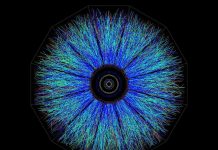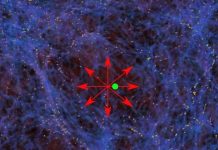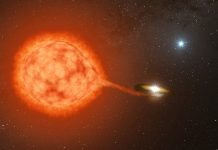
Turbulence, a phenomenon characterized by chaotic flow, surrounds us in everyday life.
From the swirling patterns in a cup of coffee to the motion of air around airplanes, turbulence is a captivating yet puzzling force that scientists have long sought to comprehend.
Recently, a group of physicists at the University of Chicago achieved a groundbreaking discovery: they successfully created a controlled environment to study turbulence, opening up new avenues of research.
Let’s delve into this remarkable breakthrough and explore the mysterious world of turbulence.
Unraveling the Enigma:
For decades, scientists have made progress in understanding an “idealized” form of turbulence, which lacks complicating factors such as boundaries and variations in strength.
However, when it comes to real-world turbulence, many questions remain unanswered.
Physicists have traditionally struggled to isolate turbulence from its surroundings for study, as external influences often impact its behavior.
This limitation has hindered a complete understanding of this fascinating phenomenon.
The Birth of Isolated Turbulence
In their pursuit of understanding turbulence, the team at the University of Chicago devised a novel approach.
Using a setup consisting of a tank of water and a ring of jets, they generated loops of fluid motion, similar to water-based smoke rings.
Their goal was to combine these vortex rings to create turbulence, but initial attempts resulted in energy dissipating rather than sustaining the desired turbulence.
However, an unexpected breakthrough occurred when they arranged the vortex ring generators at the eight corners of a box.
A Ball of Controlled Chaos
Through this unique configuration, the researchers achieved an extraordinary outcome: the formation of a self-contained “ball” of turbulence within the water tank.
This remarkable feat allowed scientists to study turbulence in a controlled manner, without interference from container walls or external objects.
By employing lasers and high-speed cameras, they could precisely measure various parameters of the turbulence, such as energy, helicity (the knottiness of loops), impulse (equivalent to momentum), and angular impulse (equivalent to angular momentum).
Unveiling the Mysteries:
The newfound ability to manipulate the turbulence parameters offered scientists unprecedented opportunities for investigation.
They could alter the direction of the spinning helices, adjust the energy input, observe the dissipation of turbulence, and study its evolution over time by varying the helicity of the vortex rings.
These experiments aimed to address fundamental questions: How does turbulence dissipate? How does it expand? What does it “remember”?
How does energy spread across different scales? Furthermore, scientists pondered whether different types of turbulence exist.
This breakthrough in creating and studying contained turbulence opens up a fascinating new playground for researchers.
It provides an opportunity to explore the intricate nature of turbulence and shed light on its elusive properties.
By gaining insights into turbulence, scientists can enhance our understanding of numerous natural and engineered systems, such as fluid dynamics, atmospheric phenomena, and even the functioning of our cardiovascular system.
In the quest to unravel the mysteries of turbulence, physicists at the University of Chicago have achieved a significant breakthrough.
By isolating turbulence within a controlled environment, they have overcome the challenges that confounding variables present in previous experiments.
This newfound ability allows for more precise measurements and the manipulation of turbulence parameters, opening doors to a deeper understanding of its behavior.
Through further research, we may uncover the secrets of turbulence and apply this knowledge to diverse fields, improving our comprehension of the world around us.
The study was published in Nature Physics.



